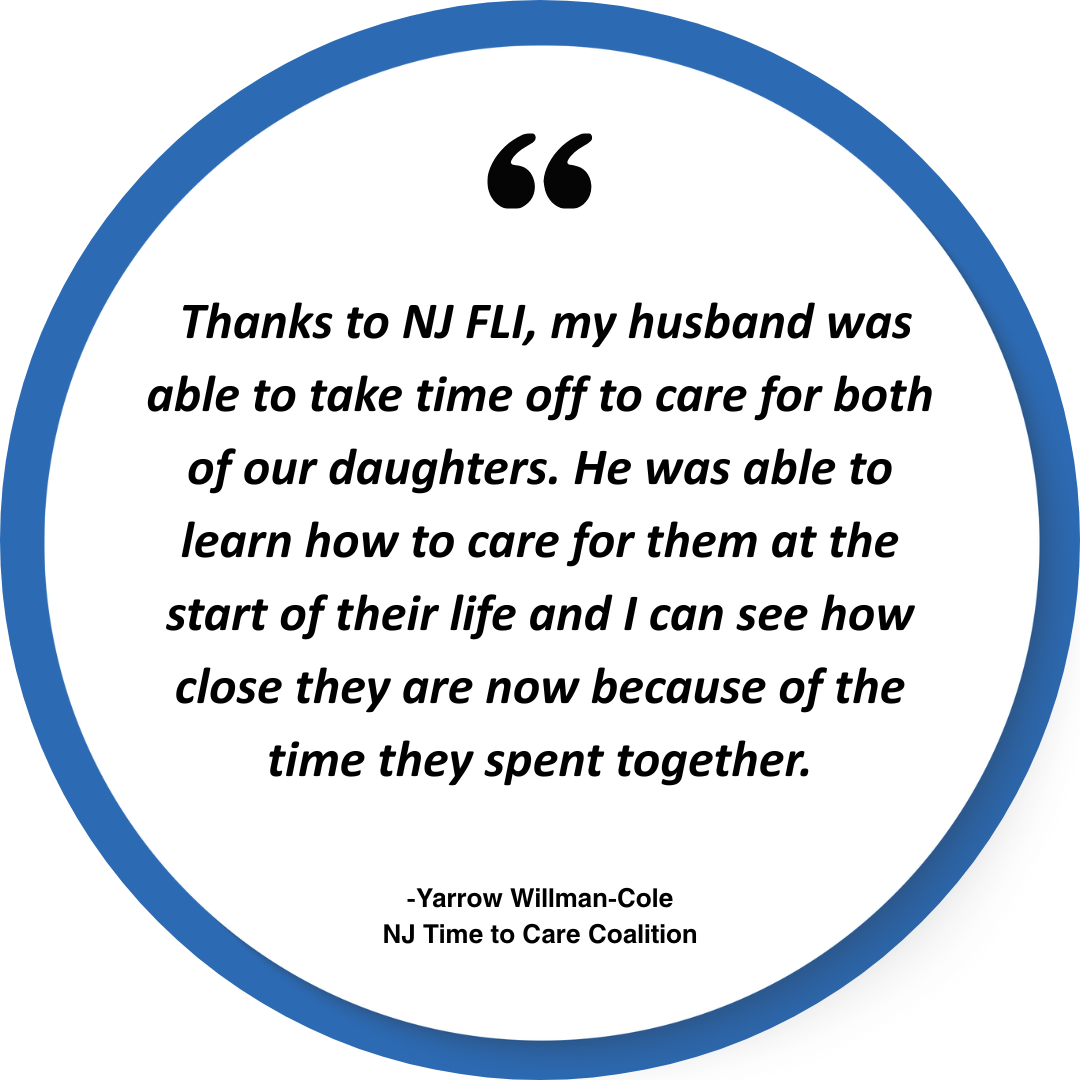Posted on June 13, 2025

By Naomi Engelhard Leontine Young Fellow
For more information on this topic, contact Diane Dellanno at ddellanno@acnj.org

Despite the fact that New Jersey’s Paid Family Leave Insurance (NJ FLI) program is generally available to both parents, fathers made up only 29.7% of bonding claimants in 2023. NJ FLI provides cash benefits to bond with a newborn, newly adopted or newly placed foster child, or to provide care for a seriously ill or injured family member. NJ’s program was signed into law in 2009 and has since been improved and expanded. As of 2019, eligible residents can take up to 12 consecutive weeks of Paid Family Leave, with a maximum benefit of 85% of wages (which is subject to a state-imposed cap).
Why Aren’t More Fathers Taking Advantage of Paid Family Leave?
Recent research highlights several barriers for fathers when considering parental leave, such as, external pressures from peers and employers, concern for career trajectory, and overall lack of awareness. Economic constraints were also among the obstacles fathers faced when considering taking leave. In New Jersey, while workers can receive up to 85% of their average weekly wage, the actual amount they receive is limited by a maximum benefit amount imposed by the state. This means that if an expectant parent's average weekly wage exceeds a certain threshold, they will only receive the maximum allowable benefit.
"There is a very real stigma dads can face when taking leave to bond with their new children,” says Yarrow Willman-Cole of the NJ Time to Care Coalition. "But New Jersey's Family Leave Insurance is available to both dads and moms equally. However, because NJ's program lacks robust job protections, the fear of job loss is a major reason for dads opting not to take leave, along with low benefits and affordability. What fathers need as part of our paid family leave program is job guarantee so they can count on having stability in wages and employment after leave. After all, what good is paid family leave if your job is not there for you when you go back?”
Why is Paternal Leave So Important?
Recent research has revealed the neurological and hormonal changes that take place in fathers that result in more effective and engaging parenting. One study found how oxytocin, a hormone typically discussed in the maternal context, is also a key ingredient in promoting father-infant bonding and is produced through contact and connection with the newborn.

Equally important, a father's active involvement in child care and household responsibilities can help ease the transition into parenthood and help the entire family adjust more smoothly when welcoming additional children. Other benefits include reduced risk of maternal postpartum health complications and improved maternal mental health, increased confidence in parenting, and higher level of parental involvement. When dads take leave to care for their newborns it can establish a foundation for life.
Moving Forward: What Can Be Done To Support Dads?
1. Ensure full pay for parental leave
Governor Murphy’s 2025 State of the State Address emphasized his commitment to delivering economic security and opportunity to all New Jersyans. Included in this effort is to provide 12 weeks of fully paid parental leave to every state employee welcoming a new child. In his 2025 budget, the Governor made good on this promise by allocating $10 million to provide state employees with full pay while they are on family leave caring for a newborn. He stated "Nobody should ever have to sacrifice their economic security in order to be a present and engaged parent."
Although not specifically for fathers, this policy benefits them by allowing them to take time off to care for their newborn without the concern of lost income. It also promotes gender equality through incentivising both parents to take time off equally, enabling fathers to play a more active role in their child’s early life, and support their partners. While this change will only impact the state’s public sector workers, it is hoped it will eventually become the norm for all.
Many employers, including ACNJ, have implemented this practice of making workers' salaries whole while they are on leave, and we hope this move by the state leads the way for more employers to adopt a similar policy to create a fairer and healthier workforce.
2. End the stigma
While Governor Murphy’s proposed increase in the percentage of wages may increase the uptake for fathers in the state’s public sector, social barriers-–such as stigma— still create obstacles for fathers considering leave. We need a cultural shift in how we view fathers staying home with their families during this crucial moment. Research indicates that employers must also play a role in this shift by emphasizing the value of bonding with newborns and supporting maternal health.
3. Guarantee job protection
Employers must consider incorporating job protection into paid leave policies, ensuring that fathers can take time off without the fear of losing their jobs. By offering job security alongside paid leave, companies not only support family well-being but also contribute to a more equitable and supportive workplace for all employees.
Let's Normalize Shared Caregiving
While NJ FLI is a great resource, there is clearly much more to be done to truly and effectively support all families. Caregiving is not just a mom's job and unfortunately, fathers fear taking parental leave to share that responsibility. If we do not address the barriers that prevent fathers from taking advantage of the paid leave, we continue to deprive them from bonding with their children--and that is a loss that affects not only them, but the whole family.
Your stories matter--let's create change TOGETHER! Please take a few minutes to share your experiences with Paid Family Leave (whether or not you took it) to help shape future advocacy efforts.




